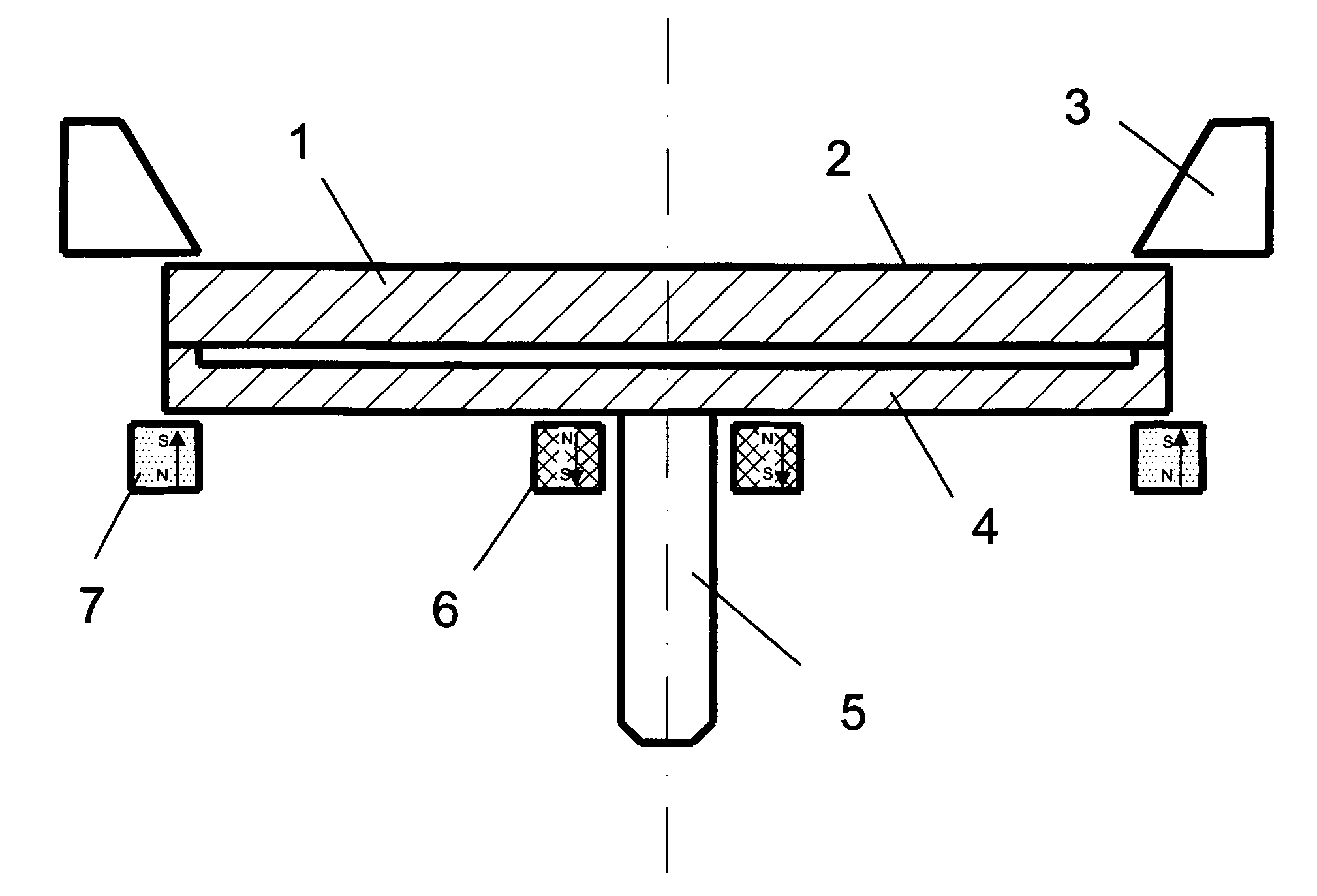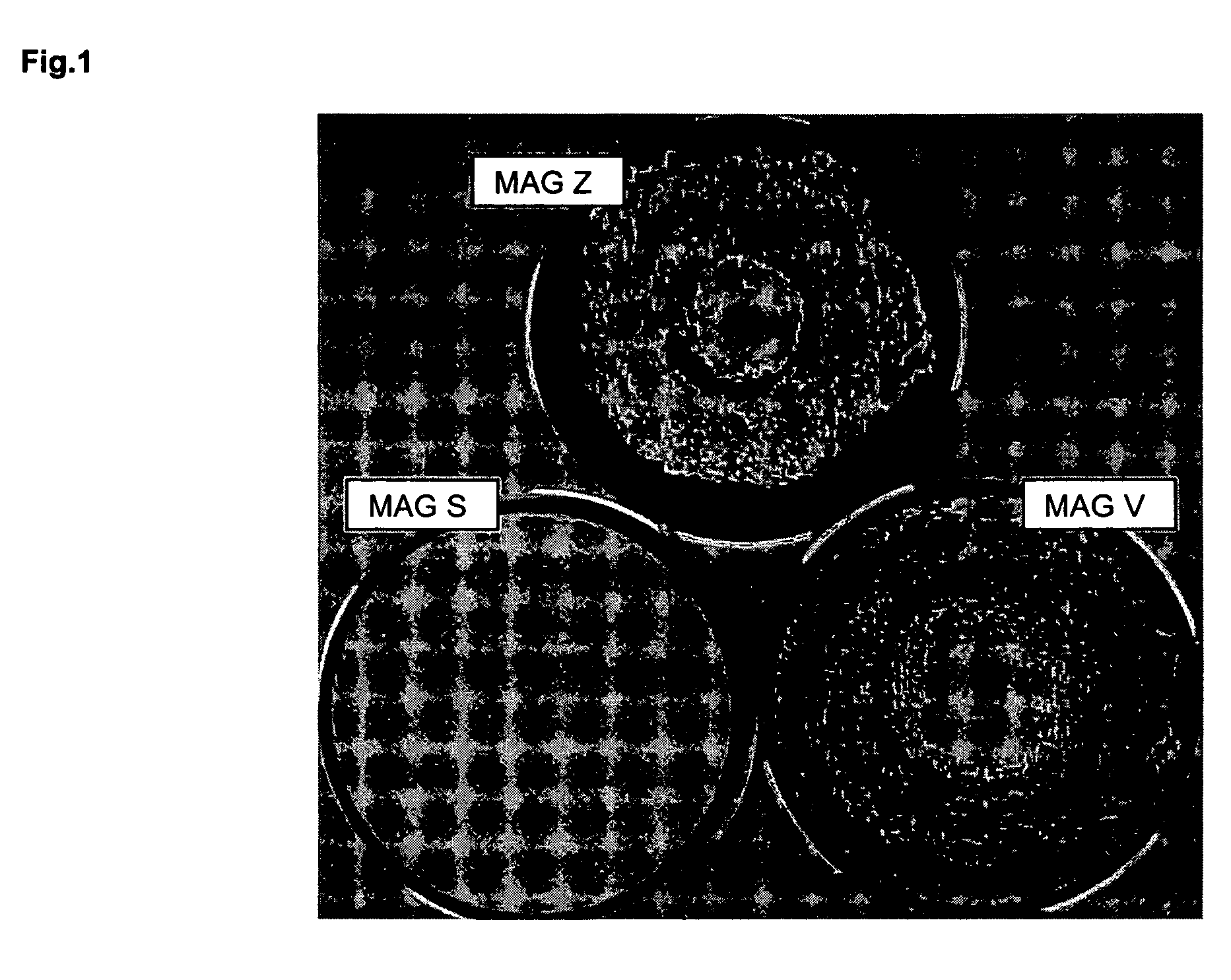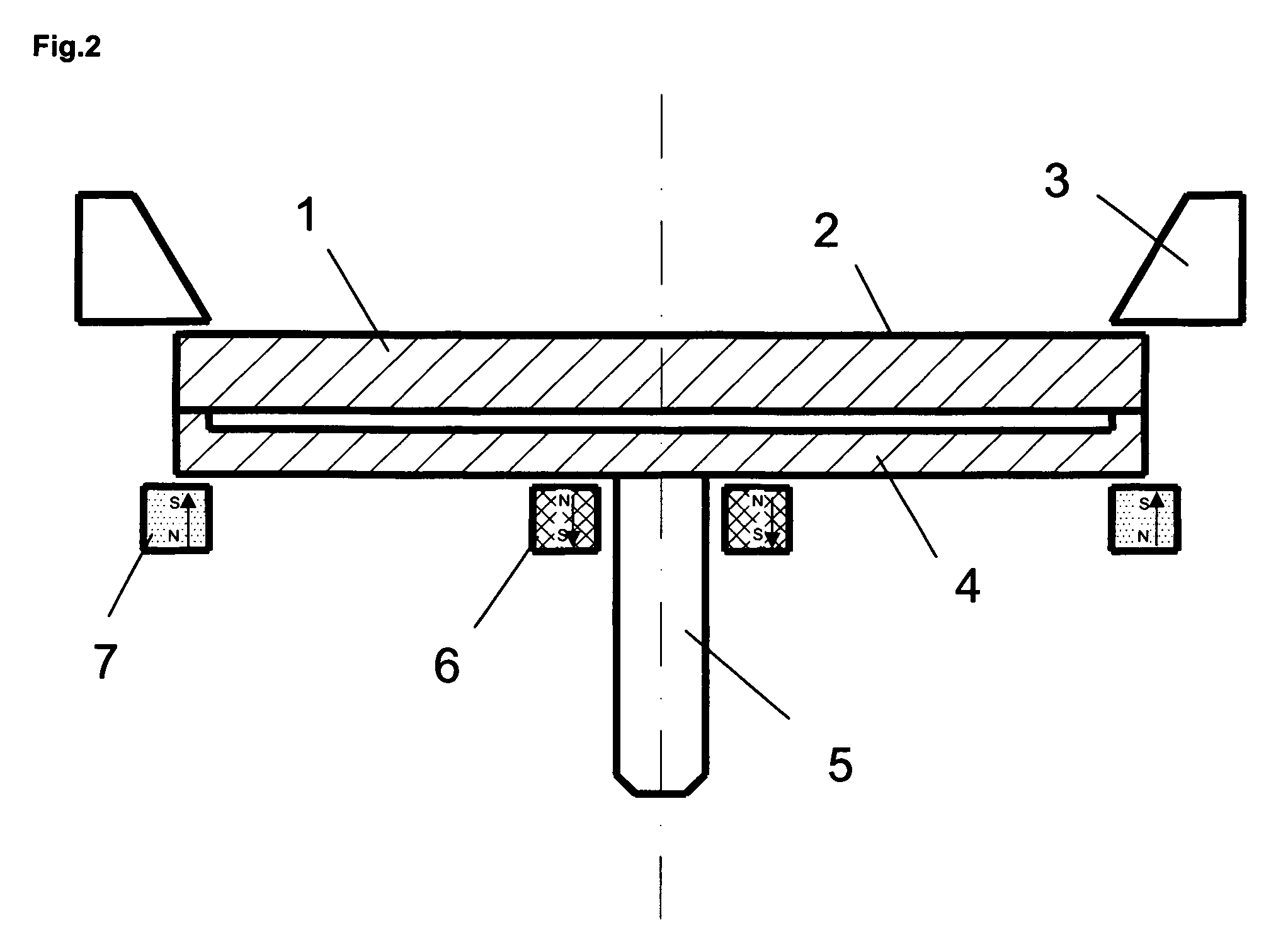Method for manufacturing poorly conductive layers
a technology of poorly conductive layers and manufacturing methods, applied in the direction of vacuum evaporation coating, plasma technique, coatings, etc., can solve the problems of large spattering, inability to operate arc sources in an oxygenous atmosphere, and at best impossible, to achieve a manner suitable for industrial applications, and the coating process to become unstabl
- Summary
- Abstract
- Description
- Claims
- Application Information
AI Technical Summary
Benefits of technology
Problems solved by technology
Method used
Image
Examples
Embodiment Construction
[0010]It is the objective of this invention to introduce a method for depositing marginally conductive and, in particular, nonconductive layers through arc evaporation, avoiding the drawbacks of prior art techniques and making it possible to implement a corresponding arc evaporation process at a high productivity level. Another objective is to provide a method whereby it is possible for the first time, even without using pulsed arc sources and / or simultaneous flushing of the arc sources with an inert gas and the concurrent recoating of the evaporated target surface, to operate over an extended length of time a stable arc evaporation process in a reactive-gas atmosphere, precipitating marginally conductive or nonconductive layers.
[0011]Surprisingly, it has been found that, with a relatively simple step such as the application of a small outer magnetic field essentially next and perpendicular to the target surface, employing at least one axially polarized coil having a geometry simila...
PUM
| Property | Measurement | Unit |
|---|---|---|
| Fraction | aaaaa | aaaaa |
| Fraction | aaaaa | aaaaa |
| Fraction | aaaaa | aaaaa |
Abstract
Description
Claims
Application Information
 Login to View More
Login to View More - R&D
- Intellectual Property
- Life Sciences
- Materials
- Tech Scout
- Unparalleled Data Quality
- Higher Quality Content
- 60% Fewer Hallucinations
Browse by: Latest US Patents, China's latest patents, Technical Efficacy Thesaurus, Application Domain, Technology Topic, Popular Technical Reports.
© 2025 PatSnap. All rights reserved.Legal|Privacy policy|Modern Slavery Act Transparency Statement|Sitemap|About US| Contact US: help@patsnap.com



